Can you imagine this busy highway corridor in Boise as a walkable, bikeable neighborhood?
Boise officials are eager to start the long awaited redevelopment of a car-dominated highway corridor.
“It’s a really slow burn,” said Jordyn Neerdaels, spokesperson for the city’s urban renewal agency, the Capital City Development Corp., or CCDC. “Like everyone, we have all these great ideas and great projects and things our partners want to see, but it takes a few years.”
Boise residents will all have to wait a little longer before seeing major development along State Street between Horseshoe Bend Road and 27th Street, but there are some smaller projects to watch as the city’s vision for the corridor unfolds.
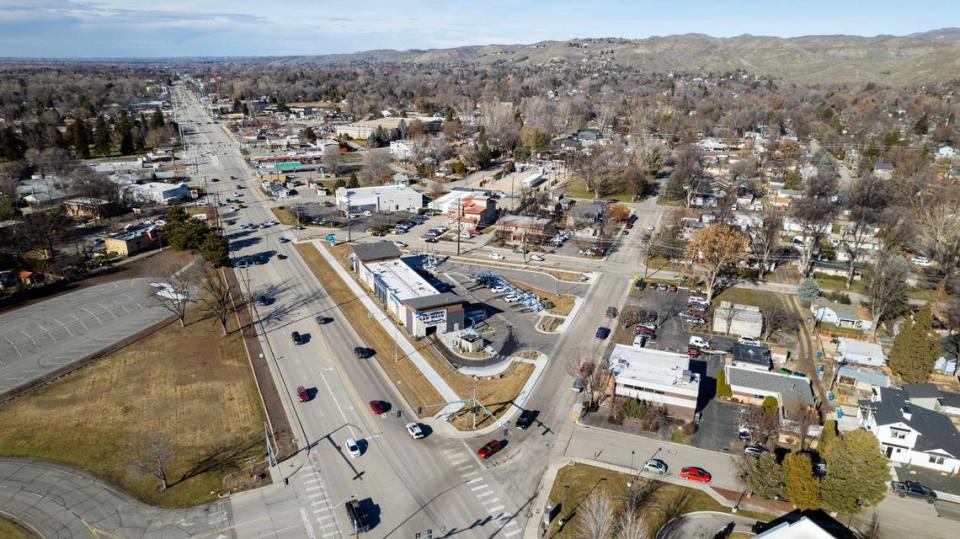
More bus stations, bicycle lanes and sidewalks
Boise Mayor Lauren McLean and the City Council created the State Street Urban Renewal District in 2022. The urban renewal agency envisions State transitioning from “a congested auto-dominated commercial corridor into a mixed-use corridor with a series of walkable activity centers.”
But first, Neerdaels said, the area needs “significant public infrastructure investments.”
Those include mass-transit and other transportation improvements. For the past several years, State Street has had to handle increasing traffic due to population growth. The city’s State Street Framework Plan said “the road cannot be widened enough to keep pace with the growth in predominantly single-occupant vehicle travel,” making it a prime location to encourage use of public transit.
McLean and the council are not expecting residents to ditch their cars and commute on a Valley Regional Transit buses that may or may not always be reliable and frequent, nor to ride their bikes down one of the city’s busiest highways. The city must make improvements first.
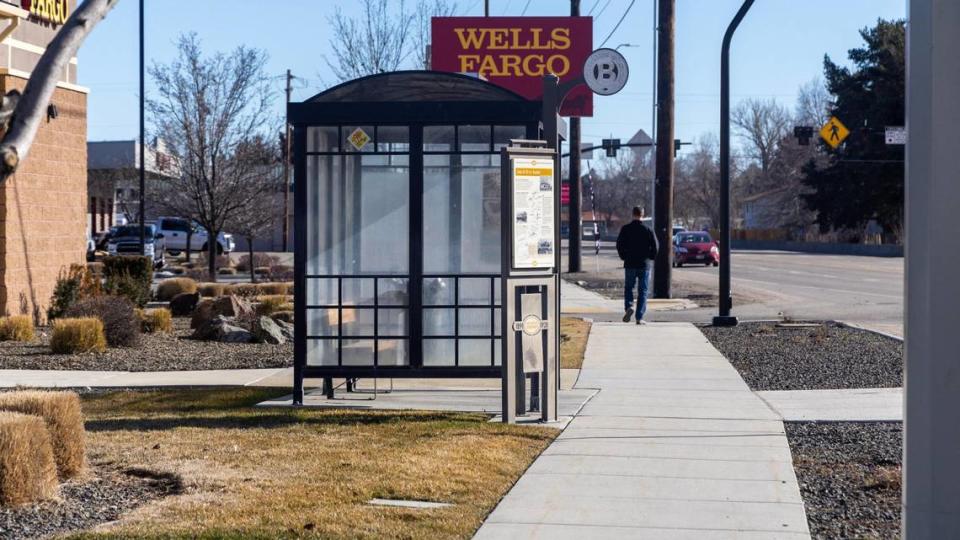
As part of its goal to promote alternative forms of transportation along State Street, CCDC has focused on five transportation “nodes” at State Street intersections with Whitewater, Collister, Pierce Park, Glenwood, and Horseshoe Bend.
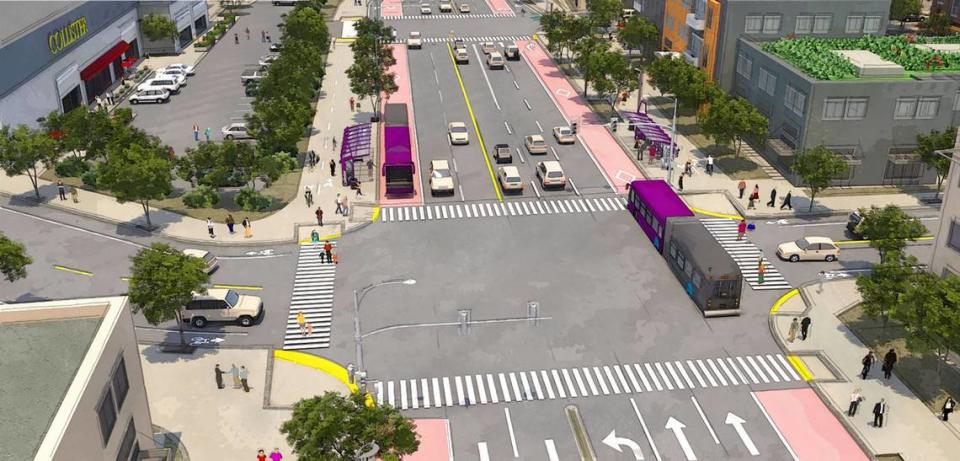
Across the six miles of Boise’s State Street, CCDC wants to add 15 bus rapid transit stations, or high-quality bus-based transit that delivers fast and efficient service. Most of the stations would be dedicated to servicing the five nodes.
Neerdaels said CCDC has already begun sidewalk additions at the Collister and Pierce Park intersections.
According to the development plan, most of the early development along State Street will be aimed near those future tranist stations “where large-format retail development currently exists.”
Today, walking along State Street between Whitewater and Glenwood is unreliable, with sidewalks ending at random locations and turning to narrow strips of dirt along the highway.
“Pedestrian and bicycle infrastructure along State Street is incomplete and creates safety concerns for motorists, bicyclists, and pedestrians,” CCDC says in its development plan.
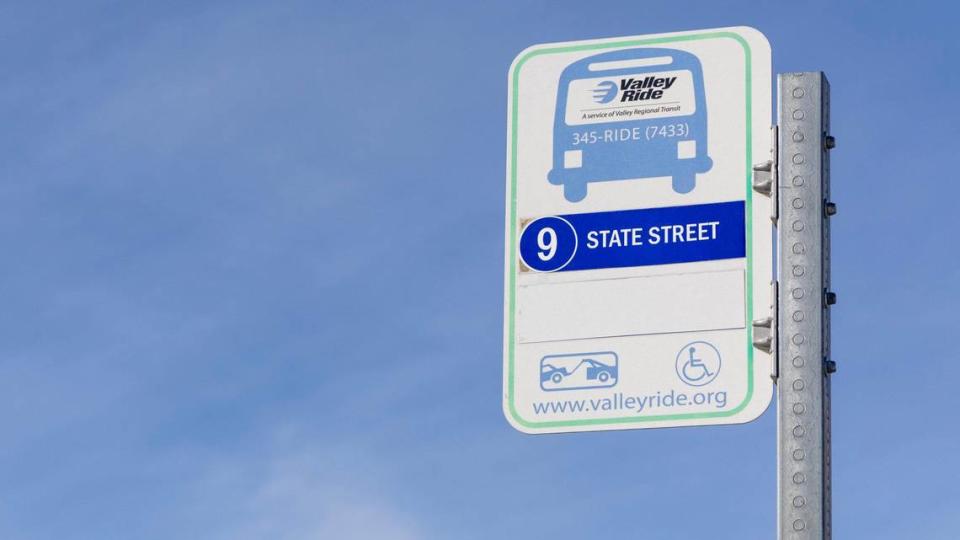
CCDC hopes to add pathways and include safe pedestrian crossings along the entire six miles.
Wilson Street Station development
Urban renewal districts are funded by property taxes. The year a district is created, which was 2022 in the State Street case, the property taxes collected by authorities like the city, county and highway district freeze. For the next 20 years, any increase in property taxes as a result of new development or increases in property values are diverted to the urban renewal agency, which spends those funds on public improvements in the district.
Since it is only a couple of years old, the State Street district has not yet generated a lot of tax increases, Neerdaels said by phone. That makes it difficult for CCDC to make improvements to attract bigger developers to the area.
But one development that CCDC is helping to pay for is underway. Pacific West Communities, Inc., headed by Caleb Roope, is building 102 apartments and ground-floor commercial spaces at State and Arthur streets. The apartments would be located on land formerly occupied by popular meat shop, Smoky Davis, and now owned by the city.
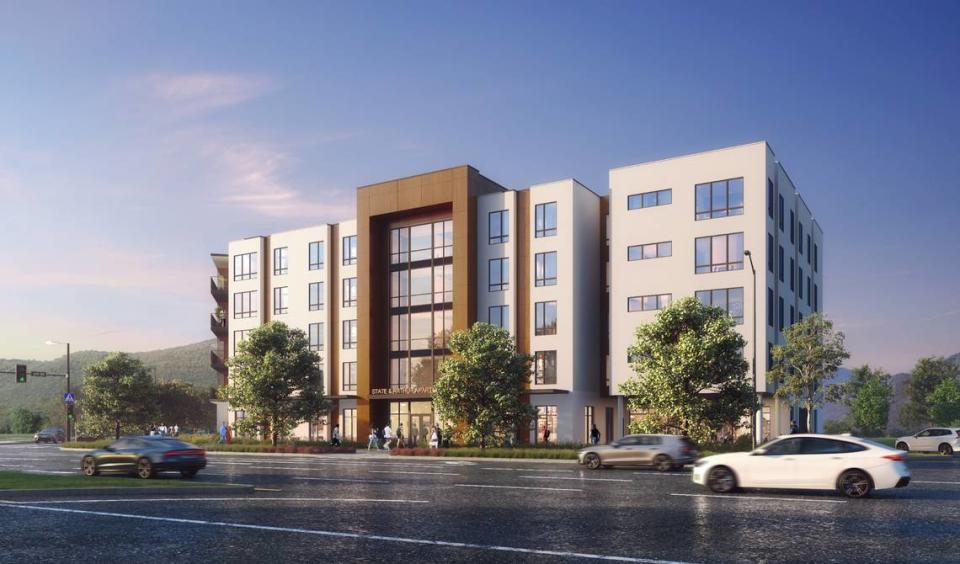
Pacific West signed a long-term, low-cost lease with the city for the land through a city trust designed to entice affordable housing. The inexpensive land enables private developers to charge lower rents, since they didn’t have to purchase the land at market prices.
According to CCDC, the Wilson Street Station, the new name for the State and Arthur apartments, will have rents affordable to tenants making 30% to 80% of the area median income, which is between $21,400 and $57,050 for a family of two.
Since the project is within the urban renewal district, Neerdaels said, CCDC is helping pay for a 12-foot pathway in front of the building.
More apartments coming
The agreement with Pacific West Communities is the only active agreement CCDC has with a developer for the State Street urban renewal area, Neerdaels told the Idaho Statesman by phone. Several other apartment buildings expected to go up along State Street that are not part of CCDC agreements. Those include:
An Eagle development company, Boglan Development, plans to build a 48-unit apartment complex at 5110 W. State St. near Collister Road. The city issued a permit for the apartments in May 2023.
Development company Johnson & Carr Inc. plans to build a seven-story apartment building with 100 apartments at the corner of 16th and State streets.
Developer Scott McCormack, of Boise’s American Pacific Advisors LLC, built the Limelight Apartments at 8306 W. State Street. The property management company, Commercial Northwest, is now leasing one and two-bedroom apartments.
Developer Clifton Trimble, of Boise’s Storhaug Engineering, plans to build a 39-unit apartment complex at 3515 W. State Street, the former location of State Street Kitchen & Drinkery and the Dutch Goose.
Meanwhile, along the Garden City stretch of State Street’s southwest side, a Texas development company, Lincoln Property, plans to build 750 housing units on the River Club Golf Course’s property.
Neerdaels said CCDC also is keeping a close eye on the former Idaho Transportation Department campus at 3311 W. State Street. The project was expected to bring both commercial and residential development to the 44-acre property.
The project may be in jeopardy with a bill that could block the state’s sale of the property. Needaels said CCDC and the public will have to “wait and see” what happens with the property.
These apartments are coming to site of popular former Boise shop. And they’re affordable
ITD’s former HQ campus in Boise was to get new housing. Then the Legislature stepped in

